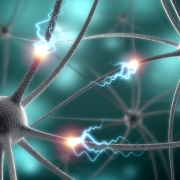Creating Hormonal Blog Content
Hormones affect choice, Jeanette Maw McMurtry explains in Marketing for Dummies. Neurotransmitters affect the actions we take related to finding joy and avoiding fear and pain.
- Dopamine makes us feel infallible and euphoric.
- Oxytocin gives us a feeling of connection and validation.
- Cortisol makes us feel threatened and fearful.
- Serotonin makes us feel calm and upbeat.
Marketers of products and services, McMurtry stresses, must learn to develop ESPs (emotional selling propositions), rather than the much-touted USPs. How will what you’re offering help buyers feel glamorous, confident, secure, superior, or righteous?
Research by psychologist Daniel Kannemann found that when people are faced with risking something in order to gain a reward, they will most often choose to avoid the risk. As a blog marketer ,then, consider how your product or service helps users avoid loss/ embarrassment/ risk. Identify the fear that drives your customer, McMurty says, then diminish it, presenting a visible solution to the problem.
Know your target audience, the author urges. Think about which aspect of their personality best predicts their behavior and which form of “hormone” or psychological fulfillment your brand helps support. Should you be focusing on:
- “scarcity” (only a limited supply of a product is available, the introductory price for a service is about to end; supplies are dwindling)
- “purpose and mission” (socially responsible, environmentally responsible, charitable purpose)
- “prestige” (feelings of superiority associated with the ownership of luxury goods)
- “health and fitness” (appealing to fear of illness and a desire for longevity)
“Ask yourself key questions about the psychological fulfillment your brand helps support,” McMurtry recommends.
Creating “hormonal blog content” means perceiving – and then presenting/seeing your product’s value in the light in which your customers’ subconscious minds will!


Follow us online!